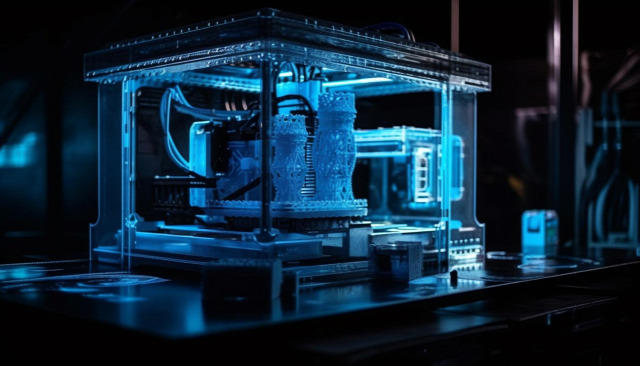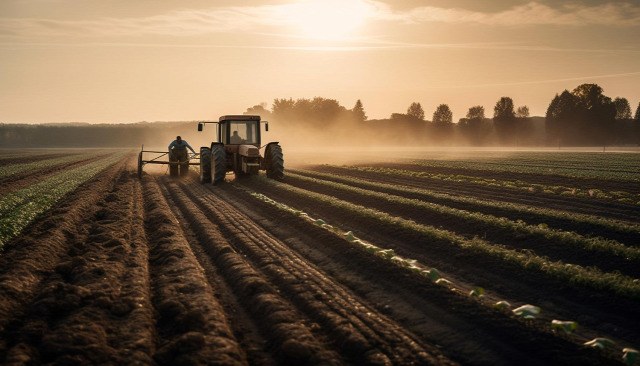
3D Printing, also known as Additive Manufacturing, has transformed the way products are designed, prototyped, and manufactured. While hardware and materials are essential components of the 3D printing ecosystem, the software and services that support the technology play a vital role in unleashing its full potential. The Global 3D Printing Software and Services Industry is experiencing robust growth as industries across various sectors embrace 3D printing technologies.
According to BIS Research, the 3D Printing Software and Services Market was valued at $9,661.7 million in 2021 and is expected to reach $80,847.6 million by 2031, growing at a CAGR of 24.3% between 2022 and 2031.
The 3D Printing Software and Services Industry is driven by several factors, including the growing adoption of Artificial Intelligence (AI) and Machine Learning (ML), demand from end-use industries like Automotive, Aerospace, etc, and increasing adoption in the Healthcare Industry. Growing investment and support from the Government are expected to positively impact the growth of the overall market during the forecast period (2022-2031).
Key Market Driving Forces
Advancements in 3D Printing Technologies:
- Continuous improvements in 3D printing tech offer better accuracy, resolution, and material options.
- Growing demand for sophisticated software to optimize designs and control the printing process.
- Need for software solutions to slice digital models, maximize hardware capabilities, and ensure efficient printing.
Growing Adoption across Industries:
- 3D printing is widely adopted in aerospace, automotive, healthcare, consumer goods, and architecture.
- Benefits include customization, rapid prototyping, reduced waste, and on-demand production.
- Demand for software tools enabling efficient design, simulation, and optimization to leverage 3D printing advantages.
Design Freedom and Complexity:
- 3D printing allows intricate and complex geometries not feasible with traditional methods.
- Specialized software needed to handle intricate designs, lattice structures, and optimize for additive manufacturing.
- Growing demand for software simplifying the design process and enabling complex geometries drives market growth.
Shift towards Digital Manufacturing:
- Adoption of 3D printing software accelerated by digital manufacturing and Industry 4.0 initiatives.
- Integration with digital design tools, CAD software, simulation, and data analytics platforms.
- Digital optimization of designs, performance simulation, and manufacturing data analysis enhance efficiency and agility.
Access More: Get FREE detailed Sample Report on 3D Printing Software and Services Market Research.
3D Printing Software and Services Sector Segmentation
- Market Segmentation by Application
- Market Segmentation by End-Use Industry
- Market Segmentation by Software
- Market Segmentation by Services
- Market Segmentation by Region
Market Growth Drivers, Challenges and Opportunities
Market Growth Drivers:
- Cost-Effectiveness, Greater Design Flexibility, and Low Wastage
- Increasing Technological Advancements in the 3D Printing Industry and Integration of Machine Learning (ML) and Artificial Intelligence (AI)
- Strong Growth of 3D Printing Technology in the Healthcare Industry
- Government Initiatives and Rising Investments in R&D
- Growing Demand from End-Use Industries
Market Challenges:
- Lack of Technical Expertise
- Limited Availability and High Cost of Materials
- Complications Related to the Intellectual Property
Market Opportunities:
- Rising Demand for 3D Printing in Emerging Economies
- Advancements in the 3D Printing Software and Services
- Rising Demand for Metal 3D Printing
- Rising Demand from Emerging Application Verticals
Key Market Players and Organization
- 3D Systems, Inc.
- Artec 3D
- Autodesk Inc.
- Digital Mechanics AB
- OC Oerlikon Management AG
- Dassault Systèmes
- Fathom Digital Manufacturing Corporation
- Imaginarium
- Materialize NV
- Organovo Holdings, Inc.
- Prodways Technologies
- Proto Labs, Inc.
- Sciaky Inc.
- Sculpteo
- Shapeways, Inc.
- Stratasys Ltd.
- VoxelJet AG
- Trimble Inc.
- Star Rapid
- Siemens Digital Industries Software
- Xometry Inc.
- Desktop Metal, Inc.
- Castor Technologies Ltd.
- Axial3D
- Nano Dimension
Conclusion
The 3D Printing Software and Services Industry is witnessing significant growth, driven by the increasing adoption of 3D printing technologies across industries including Robotics and Automation. From design and modeling software to slicing tools, workflow management systems, and professional services, the market offers a diverse range of solutions that enable businesses to fully leverage the potential of additive manufacturing. As technology continues to advance and new applications emerge, the 3D printing software and services market will continue to thrive, enabling innovation, efficiency, and customization in the realm of manufacturing.





